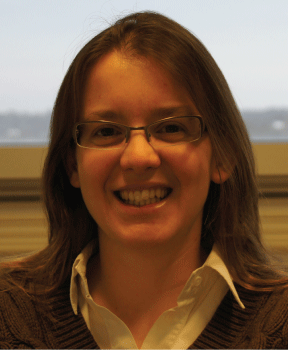An Improved Road to Recovery

By Katie Webb, CBB Biographer
January 9, 2013
Restoring proper movement following a joint replacement can be a long, arduous process, requiring many hours of work. The current clinical practice following a joint replacement involves physiotherapy. Physiotherapists use visual inspection and questionnaires to assess patients before assigning them exercises. The physiotherapist will then observe patients to ensure that the exercises are completed correctly and watch for progress, updating exercises based on capabilities as a patient progresses. Overall, this process is very time intensive for the physiotherapist, cannot be well quantified, and does not utilize technical assistance. Moreover, the subjectivity of this method means that different physiotherapists will assess patients differently and assign different exercises, and patients’ success may differ based on this. Progress however, is hard to track both between physiotherapists and even between patients seeing the same physiotherapist
Dana Kulić, Centre for Bioengineering and Biotechnology member and University of Waterloo Assistant Professor, is developing tools and an automated system to assist in rehabilitation following a joint replacement. These tools will allow physiotherapists to better assist patient recovery following joint replacement surgery by measuring their starting point and progress more accurately, tracking patient movement to see that exercises are completed properly, and allowing everyone involved in the patient’s recovery process to access this data in a user-friendly manner.
To do this, Kulić, along with her partners at the University of Waterloo, Toronto Rehabilitation Institute, and industrial partner Cardon, and with financial assistance from NSERC and OCE, is developing a system of sensors which can be worn during physiotherapy to provide accurate information on human pose and movement. These sensors are small and lightweight, and fit into a strap which can be placed around leg limbs, measuring angular velocity and linear acceleration using an accelerometer and gyroscope. These systems are also being designed with affordability, portability, and practicality in mind to make them suitable for both the clinic environment and for tracking take-home practice of exercises between sessions.
With only two to three sensors placed on the affected limb, Kulić is using algorithms to calculate the joint angles and then calculates in real-time data that can be used to give instant alerts that exercises are not being completed properly. Using the software that Kulić and her colleagues are developing, the sensor system also allows for single-patient analysis of whether exercises are being done correctly and as prescribed, where consistent deviations (indicating compensation or injury) are occurring, the extent of a patient’s range of motion, and the session to session improvement of a patient. And, on a larger basis, progress of groups of patients compared to others that have undergone similar surgeries. This higher level of analysis allows for physiotherapists to examine which treatments are having the greatest impact on patient recovery.
It is Kulić’s hope that the sensors that she and her colleagues are developing can also be used to help in sports injury rehabilitation and practice between physiotherapy sessions. The ability to analyze data from patients at both the individual and group level allows physiotherapists to improve treatment, allowing them to determine the most effective road to recovery.